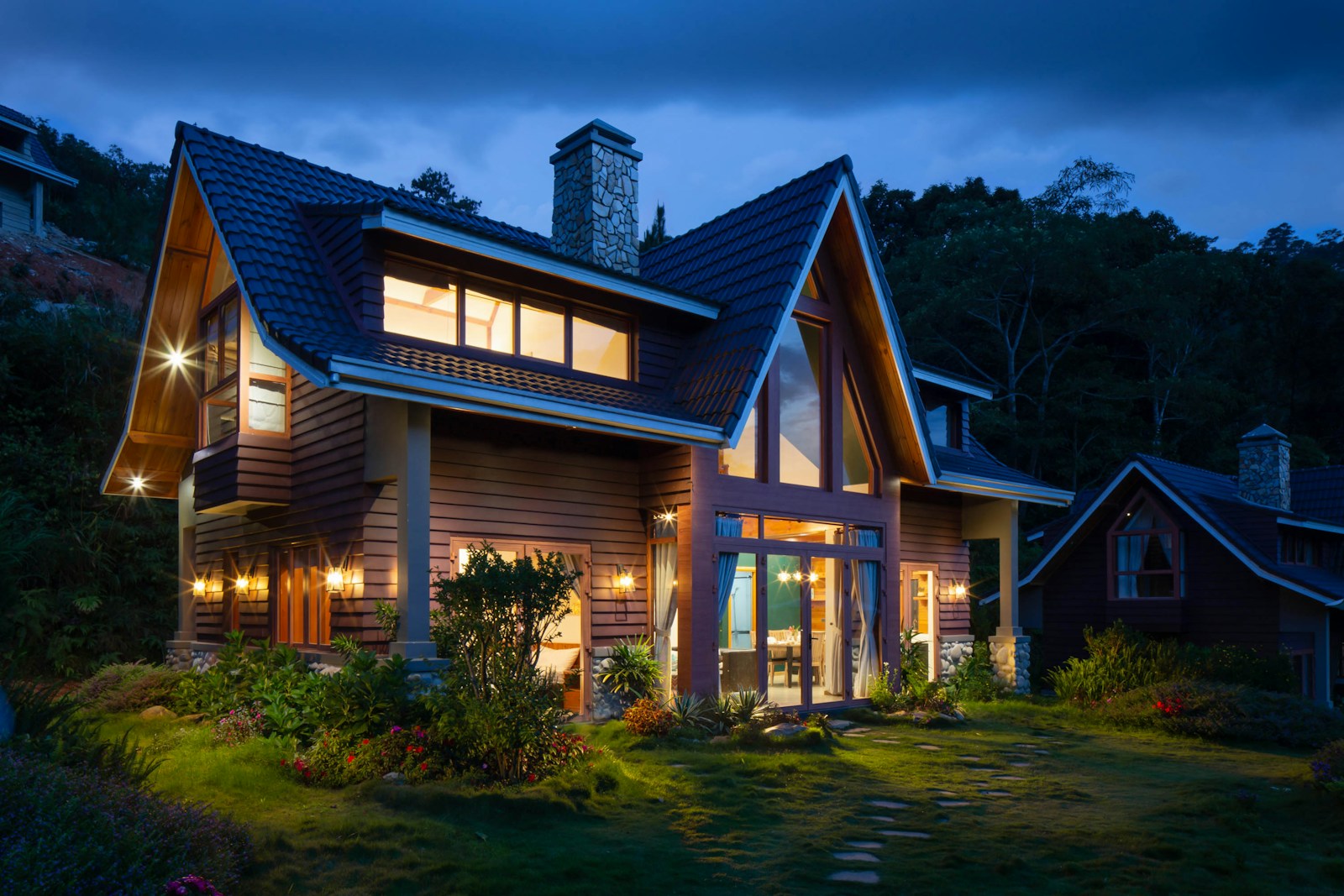You ever look at a roof and think, “Wait a second, them shingles ain’t all the same color, right?” But then – maybe you’re too far down the sidewalk or holding a coffee you’re afraid to spill or it’s just too sunny to care – so you let it slide. But later, like three days later while rinsing dishes or something, you wonder again. Did they mix shingle brands? Is that even allowed? Or worse… did they mean to?
The “One Brand Rule” That Ain’t in Writing but Lives in Every Roofer’s Head
Here’s where it gets muddy. Technically, nothing – literally nothing – in the building code (unless we’re talking warranty stuff, which we will) says you can’t mix brands. But ask a roofer at a bar after three beers. Or one who just finished patching hail damage in 102°F. They’ll tell you, almost squinting like they don’t want the words to come out, “Yeah… but you shouldn’t.”
Why? Pride? Habit? Fear of the roof gods raining down granules on their work boots? Maybe all of it. Or maybe it’s just that weird thing that happens when you break an unspoken rule and suddenly everyone in the industry glares at you like you just glued metal flashing with peanut butter.
Also, let’s not forget – the shingle industry is basically three huge companies pretending to be seven. GAF, Owens Corning, CertainTeed… you know the names. But try asking your supplier to mix GAF Timberline HDZ with OC Duration and they might either laugh or go weirdly quiet. Like you just asked if they believe in ghosts.
In most cases, you will see asphalt and metal combination roofs for homes that want an industrial vibe. While you can’t combine roofing materials in the same area (you can’t seamlessly transition from asphalt to metal in the middle of your roof), you can switch up the material in separate areas. For example, if you want metal roofing on dormers and porches (areas that don’t make up the bulk of your roof), that is entirely possible!
https://rescue-my-roof.com/blog/combining-metal-asphalt-roofing-shingles/
They Look the Same… Until They Don’t
You ever put two blacks next to each other? Like two shirts—both “black”—but one’s kinda coal-ish and the other’s leaning towards that dead navy blue your grandma used to call “midnight.” Yeah, same thing happens with shingles. The color names lie. Estate Gray from Brand A looks like mashed-up oyster shells, while Estate Gray from Brand B looks like a sidewalk in winter slush.
Granules don’t lie either. The texture, the sparkle (yes, sparkle), the way it catches light from a slant—brand to brand, they don’t sync. You won’t notice from far away, unless you’re a roofer or a real estate agent with binoculars, but close-up? It’s a full-on visual mutiny. Your roof turns into a patchwork quilt made by a committee that never met.
Some folks try to justify it like, “Hey, the back of the roof ain’t visible anyway.” Yeah, until someone gets a drone.
When you choose materials from the same manufacturer, you eliminate these headaches. GAF manufactures both steep-slope and low-slope roofing materials that can be designed to work together at transition points. “We’ve got AutoCAD® details specific to these transition points, whether the low-slope solution involves single-ply membranes, modified bitumen membranes, or even coatings,” explains Rink. “There is a specific way to install these materials to help prevent issues at the transition points.”
https://www.gaf.com/en-us/blog/commercial-roofing/caring-for-the-mixed-roof-on-your-building-281474980108289
Warranty Woes: AKA “The Shingle Company Will Laugh at You”
Here’s the part that makes even experienced roofers flinch. Warranties. That golden fake sense of security everyone parades around during quotes. “Lifetime limited warranty” – those three words have launched a thousand lawsuits.
But mix brands? Forget it. Shingle companies love a reason to dodge a claim. You mixed brands? “Oh, that wasn’t our failure. That was their shingle.” Or worse: “You voided compatibility. Can’t prove wind resistance rating applies anymore.” You could have nailed every shingle with NASA precision and they’ll still blame it on brand-mixing.
Even if just a few squares are different, especially during a repair? Still void. Doesn’t matter if it was to patch an armageddon hailstorm or a raccoon tornado. Their job is to find a way not to pay. You basically handed them a “get out of warranty free” card. In cursive.
But Sometimes… You Don’t Have a Choice, Do You?
There was this guy in Fort Worth – I forget his name – who had to patch a section of his 8-year-old roof after a tree limb the size of a motorcycle fell smack in the middle of it. His contractor couldn’t source the same brand anymore. Discontinued. Classic move. Happens a lot. So what do you do? Leave a hole? Or patch it with the closest match?
You bet he patched it. With another brand. Looked fine. From 20 feet away. His HOA wrote him up. Not even kidding. Some rule buried in a PDF from 2006 about “aesthetic continuity.”
So then what? Rip out the whole slope to match 9 damaged shingles? Financially speaking, that’s like slashing all four tires because one had a nail in it.
The Frankenstein Roof: How Bad Can It Really Get?
Truth is, most homeowners wouldn’t know if you used six brands and a chunk of leftover roll roofing from your uncle’s garage. As long as it doesn’t leak, they’re happy. But leaks love weak points. And where two brands meet? That’s a potential weak point. Different thickness, overlap inconsistencies, adhesive strip variation – it all adds up. Not always. But sometimes.
Then you get callbacks. “My attic smells like mold.” “There’s a weird dark spot.” “Why does my roof look like a checkerboard at dusk?” You end up doing twice the work trying to explain why something that should have worked… just didn’t quite.
There’s this theory floating around – can’t remember if it was Reddit or some crusty forum—where a roofer claimed mixing brands was “roofing blasphemy.” Like he actually used that word. Another guy chimed in saying he did it and never had an issue. He said, “It’s a roof, not a designer handbag.” That one stuck with me.
Have you ever heard of a Frankenstein roof system? It’s not Halloween related, but it’s equally as frightening and more common than you might think. Similar to how Frankenstein is made up of different body parts, this roofing system is when a roofer combines materials from different manufacturers to repair or replace your roof.
https://nolandsroofing.com/blog/why-you-should-avoid-a-frankenstein-roof-system/
Why It’s Still Done (But Whispered About)
Shortages. Discontinued SKUs. Emergency patch jobs. Budget roofs for rentals that are gonna get demo’d in 3 years anyway. Insurance claims where adjusters lowball the shingle price so bad you’re left raiding leftover pallets. So yeah, it happens.
But talk to most GCs or insurance adjusters off the record, and they’ll say they’ve seen it all. One even said he saw three brands on the same slope. Homeowner didn’t care. He flipped it 3 months later. No buyer asked. That house probably outlived most of us.
And still – nobody wants to admit they did it. It’s like peeing in the pool. You can technically get away with it, but everyone pretends they didn’t.
Final-ish Thought (Because There’s No Perfect Answer)
So can you? Yes. Should you? Eh. Depends how brave you feel that day.
If you’re patching a spot behind a chimney no one sees? Maybe. If you’re doing a 45-square new roof in a snobby cul-de-sac with a drone-happy HOA president? Probably not. If you’re doing your own cabin in the woods with leftover bundles and duct tape? Who’s gonna stop you?
Mixing shingle brands is roofing’s equivalent of using two brands of cereal in one bowl. Some folks swear it tastes fine. Others think it’s disgusting. But in the end—if you don’t tell anyone—you might get away with it. Just don’t try to collect warranty money afterward.
Or hey, maybe you’ll be the roofer who starts a trend. “Patchwork Roofs”—the new rustic. I mean… probably not. But stranger things have happened.


Be First to Comment